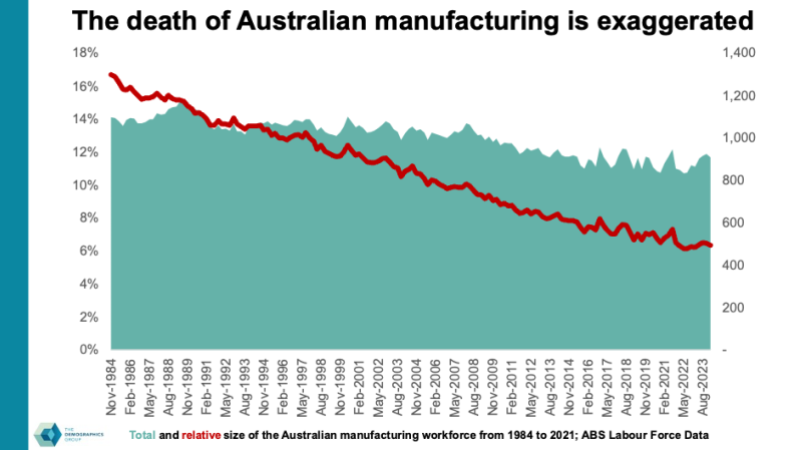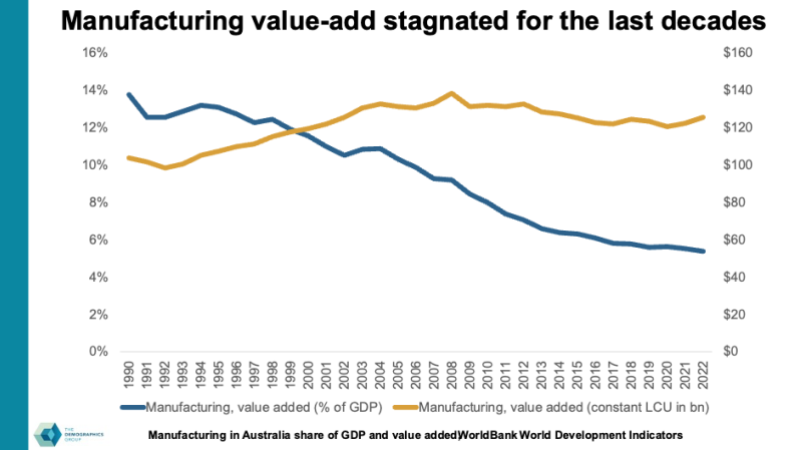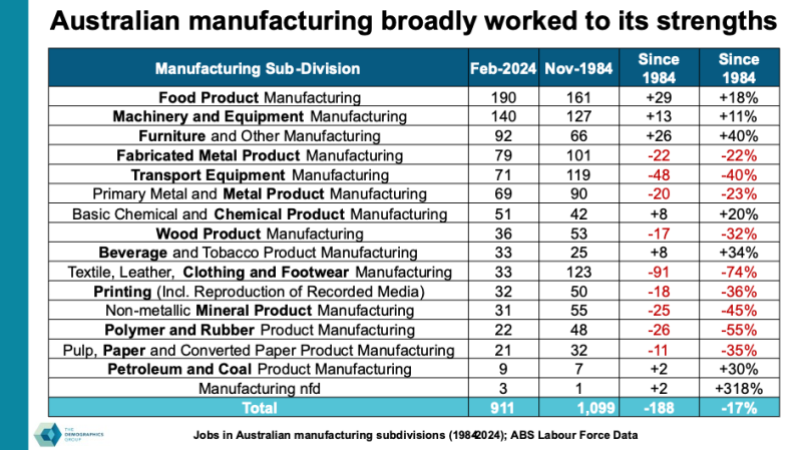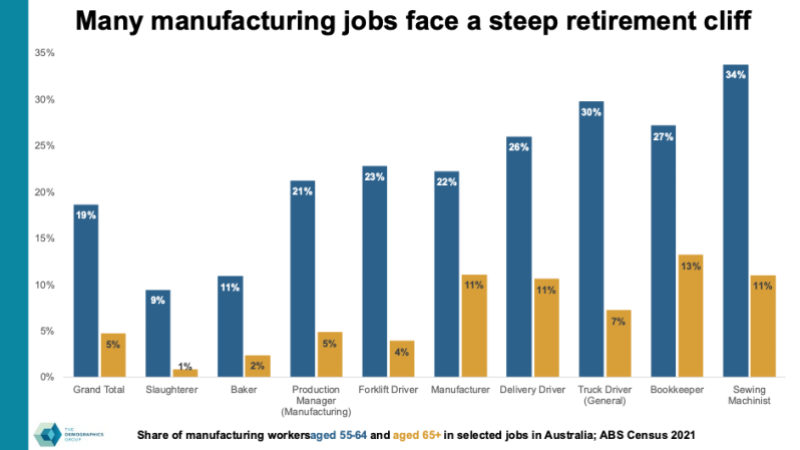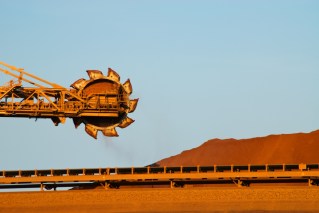The Stats Guy: Australian manufacturing is stronger than you think


This story of a declining manufacturing sector isn't the full story. Photo: TND/Getty
Australian manufacturing was once guarded by protectionist tariffs that ensured imported goods were so expensive that locally produced goods could easily compete on price.
In 1970, more than 25 per cent of all Australian jobs were in manufacturing. As tariff barriers were rolled back, more international competition entered the nation. By 1984 only 16.7 per cent of the workforce was employed in factories.
Today a measly 6.3 per cent of Aussies work in manufacturing.
This story of a declining manufacturing sector doesn’t surprise you, but it’s not the full story.
While the share of workers employed in manufacturing plummeted and the sector lost its prominent cultural position as the backbone of the Australian middle-class, the total job losses weren’t anywhere near as dramatic.
Sure, 188,000 manufacturing jobs were lost since 1984 (going from 1.1 million to 911,000 workers). These are not just numbers but real people who lost treasured jobs.
That said, employment in the sector only declined by 17 per cent since 1984 which is much less spectacular than the relative drop in importance (16.7 per cent down to 6.3 per cent of all jobs) would suggest.
Even that type of loss might be an over-count of sorts. Let’s not get too technical here but some of the lost manufacturing jobs weren’t actually lost.
They simply migrated out of the manufacturing category into warehousing and logistics. Manufacturers outsourced these functions as their supply chains began to operate under the just-in-time model to minimise warehousing costs.
So far, we’ve looked at employment figures. Now let’s explore the economic side of things and look at two indicators that aren’t as intuitive to understand as employment data.
In 1990, manufacturing was responsible for about 14 per cent of our national GDP. That figure now stands at 5 per cent. Yes, you are guessing the punchline correctly. In absolute terms, manufacturing added more value to the national economy.
Corrected for inflation, manufacturing added value to the tune of $104 billion in 1990 but today brings in $126 billion. Put simply, manufacturing is economically more important now than it was in the past.
Jumping back to employment data, we can see that while manufacturing as a whole lost 17 per cent of its workforce in the past 40 years, some subdivisions of manufacturing saw growth. Of the 16 subdivisions, seven in fact did well.
Australia roughly worked towards its strengths. Remember that the Australian national business model relies on mining, agriculture, international education, and tourism. Education and tourism can be almost ignored here since the outputs can hardly be value added to through manufacturing.
Australian food and beverage product manufacturing adds value to the agricultural output our farmers and growers produce. As a big food exporter, this value add is crucial and will continue to be supported through government initiatives. Specialised manufacturing of machinery and equipment is linked to agriculture and mining alike.
Focus on value adding
The future focus in Australian manufacturing will continue to be on value adding to mining and agriculture but will also try to improve our supply chain sovereignty. Pharmaceutical, defence, and some specialised manufacturing will be supported to minimise the risk of future global supply chain and trade disruptions.
Many analysts expect more trade disputes, geopolitical tensions, or even piracy in our future and making a few strategic products in Australia rather than importing them acts as a hedge against such developments.
That sounds like a brighter future for manufacturing, doesn’t it? Well, sort of. Manufacturing, like every other industry, faces a steep retirement cliff in the coming decade.
In a previous column I described the concept in more detail but the basics are told quickly. A certain share of workers are already of retirement age (nationwide 5 per cent of workers are aged 65+) or will be of retirement age by 2034 (meaning they are 55-64 at the moment).
About 15 per cent of all workers fall into this category. These workers, totalling about 20 per cent of the workforce, will fall off the retirement cliff throughout the coming decade and will need to be replaced.
The manufacturing workforce is older than the Australian average and about 24 per cent will need to be replaced by 2034. For some jobs the situation is more severe than for others.
As a German, I will continue to have access to my sausages and bread as both slaughterers and bakers are young professions that aren’t losing too many people to retirement. In many other manufacturing jobs the situation is more severe.
Production managers face a slightly steeper retirement cliff than the industry-wide average. As a manufacturer you need to have a clear succession plan for these kind of roles in mind.
Truckies go missing
Many jobs that you might consider basic, like forklift drivers, are an increasingly rare breed. You won’t need to search long until you find business owners that can’t believe how much money they are paying their forkies. A simple forklift licence, in the right market, can bring a decent income these days.
As always, I am very concerned about the shortage of truck drivers. We already don’t have enough truckies, they are an ageing cohort, and must be replaced soon.
We have nowhere near enough young people in Australia willing and able to fill these gaps in employment. Forever onwards truck drivers will be imported from overseas. There is no alternative to it as truck drivers are needed across all industries and geographies. I would be surprised if there is a single self-driving truck outside of a mining site in Australia by 2034.
Truckies will see their wages rise in the process.
When reading about the skills shortage in manufacturing, you might’ve thought of the most obvious solution already. Let’s just automate manufacturing! This will indeed to a large degree be the way forward.
Successful business owners will invest in machinery to speed up parts of the manufacturing process. These investments are costly and will frighten many businesses. Missing the boat on such investments risks that these businesses fall behind.
This is the time for manufacturers to be bold, to invest, and to ensure that “Made in Australia” continues to grow in importance.
The demand and government support for Australian manufacturing will be there – now it’s up to businesses to make the most of the opportunities.
Demographer Simon Kuestenmacher is a co-founder of The Demographics Group. His columns, media commentary and public speaking focus on current socio-demographic trends and how these impact Australia. His latest book aims to awaken the love of maps and data in young readers. Follow Simon on Twitter (X), Facebook, LinkedIn for daily data insights in short format.
